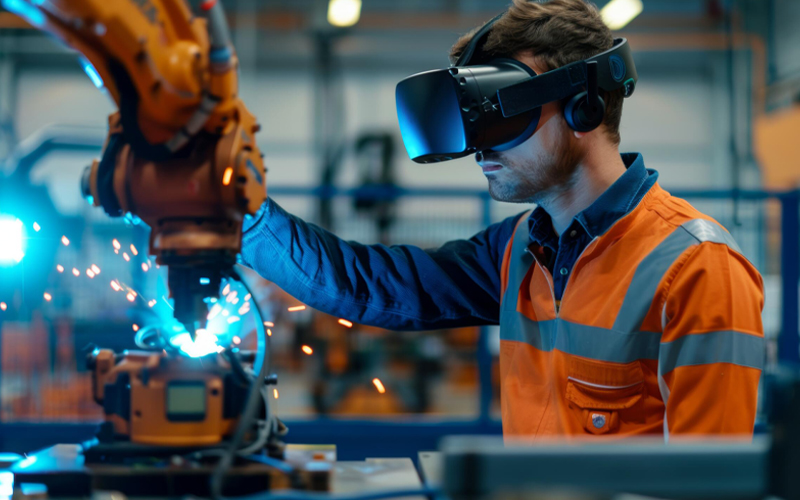As a globally renowned athletic brand, Nike manages a vast range of products, which presents significant challenges in inventory control. In the early 2000s, the company incurred a staggering $100 million loss due to goods-tracking issues and later suffered further losses resulting from inaccurate demand forecasts, despite investing in inventory management software.
Nike's predicament highlights the critical importance of effective inventory control.
Inventory control refers to the supervision and management of goods flow within an organisation that allows for prompt customer order fulfilment. It entails maintaining ideal inventory levels, minimising stockouts and overstocking.
Inadequate inventory control affects businesses of all sizes, large and small. It leads to financial repercussions, harms a brand's reputation, and in extreme cases, leads to bankruptcy or company closure.
In today's complex business landscape, the question arises whether simply modernising legacy systems suffices to overcome inventory control troubles. While it is a step in the right direction, businesses need cutting-edge technology that enables real-time action and decision-making to address inventory challenges effectively.
The Internet of Things (IoT) has emerged as a potential solution to these issues
IoT: An introduction
IoT encompasses a network of interconnected, web-enabled things embedded with devices such as processors, sensors, and communication hardware. The things can range from everyday objects such as household appliances, wearable devices and vehicles to more complex systems such as industrial machinery and city infrastructure. You just need to assign the devices an Internet Protocol address so that they can exchange the data they gather from the things they are embedded in with other IoT devices or cloud platforms over a network.
Businesses that realised IoT’s potential and implemented it confirm its numerous benefits, including enhanced operational efficiency, streamlined processes, superior customer service, better-informed decision-making, and ultimately, increased business value.
IoT for inventory control
IoT has impacted various industries, including manufacturing. Here are some of the critical impacts of IoT :
- Real-time inventory tracking: IoT-enabled devices such as sensors and RFID tags on products, equipment, and storage units help monitor goods movements and track inventory levels in real time. This helps manufacturers gain accurate information about location-wise stock levels that helps them plan inventory replenishment better and ensure that they strike the right balance between excess inventory and stockouts.
- Inventory optimisation: IoT enables manufacturers to take proactive measures by identifying obsolete or slow-moving inventory. This way, organisations can save carrying costs and wastage on unnecessary items.
- Demand forecasting: With IoT devices collecting vast amounts of data, manufacturers can use advanced analytics tools to gain insights into their inventory patterns, demand fluctuations, and production trends. This enables better demand forecasting and inventory optimisation.
- Predictive maintenance: IoT devices help monitor the condition of manufacturing equipment and machinery. By collecting data on machine performance, manufacturers can predict maintenance needs, minimise the risk of equipment failures, reduce downtime, and ensure that production runs smoothly.
- Automated reordering: Inventory management systems enhanced by IoT technology have the capability to initiate reordering procedures automatically as soon as predetermined thresholds for inventory quantities are met. This streamlined approach ensures that restocking is carried out promptly and eliminates the necessity for manual involvement.
- Supply chain visibility: IoT enhances transparency across the supply chain by providing real-time data on inventory levels, shipping status, and production progress. This enables better collaboration between manufacturers and suppliers, leading to more effective inventory control and a more efficient supply chain.
- Just-in-time manufacturing: IoT-based inventory control facilitates the implementation of just-in-time manufacturing principles. Manufacturers can align their production schedules with demand data, reducing excess inventory and ensuring that products are produced and delivered only when needed.
- Reduced loss and theft: IoT technologies can help mitigate inventory loss and theft by continuously monitoring and securing inventory items. This ensures that products are accounted for throughout the manufacturing process and supply chain.
- Quality control: IoT sensors can also be applied to monitor product quality during the manufacturing process. This helps identify defects and issues early on, thereby reducing the risk of holding faulty inventory.
Undoubtedly, IoT has the potential to enhance inventory management. However, the question remains: is the investment justified?
The smart thing to do
According to GEODIS' 2020 Supply Chain Worldwide survey, 94% of businesses that implemented IoT in their inventory management have experienced a favourable return on investment. This statistic proves the transformative power of the IoT. It highlights that most businesses view IoT as a lucrative opportunity rather than an unnecessarily complicated addition. For companies undecided about integrating IoT into their inventory management practices, this data presents a compelling case for doing so.
* For organizations on the digital transformation journey, agility is key in responding to a rapidly changing technology and business landscape. Now more than ever, it is crucial to deliver and exceed on organizational expectations with a robust digital mindset backed by innovation. Enabling businesses to sense, learn, respond, and evolve like a living organism, will be imperative for business excellence going forward. A comprehensive, yet modular suite of services is doing exactly that. Equipping organizations with intuitive decision-making automatically at scale, actionable insights based on real-time solutions, anytime/anywhere experience, and in-depth data visibility across functions leading to hyper-productivity, Live Enterprise is building connected organizations that are innovating collaboratively for the future.







